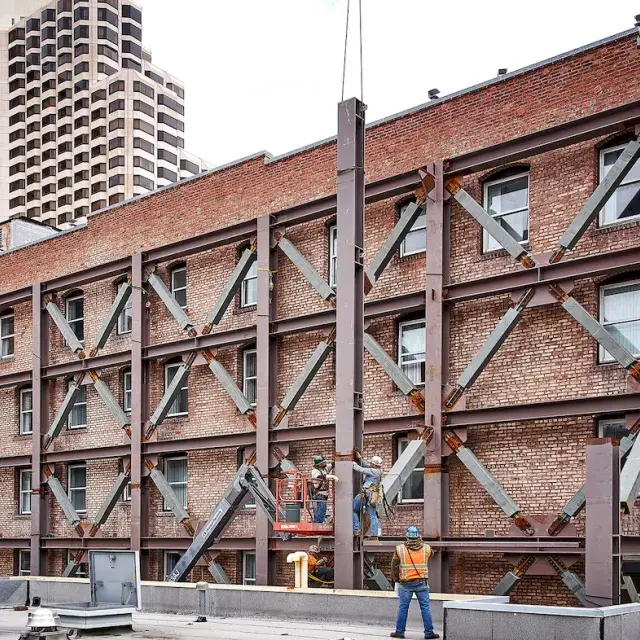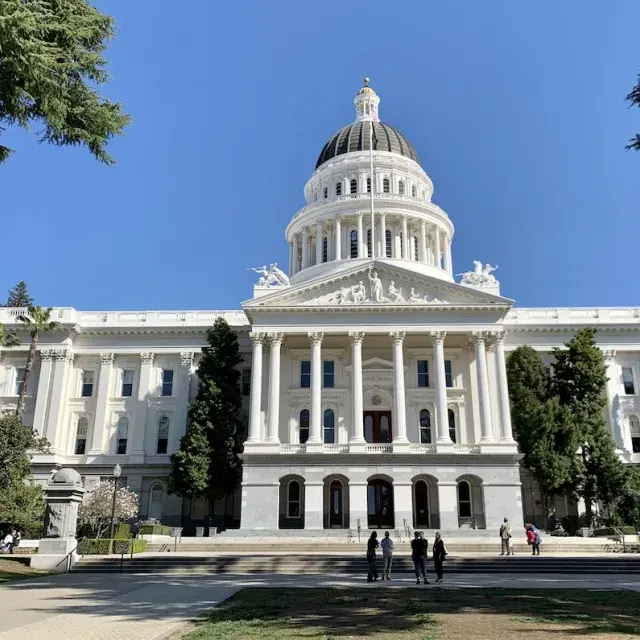President Biden has released his request for the fiscal year (FY) 2023 budget, kicking off the start of the FY23 appropriations cycle now that the FY22 omnibus has been enacted. The $5.8 trillion request focuses on deficit reduction, strengthening supply chains and bolstering pandemic response. It also proposes increases to many of Enterprise’s key affordable housing and community development policy proprieties.
Here’s an overview:
Department of Housing and Urban Development
Overall, the request calls for HUD to be funded at $71.9 billion, a $6.2 billion increase from FY22 enacted levels. Some highlights include:
- $32.1 billion for Housing Choice Vouchers, which would accommodate 200,000 new vouchers, prioritizing residents fleeing from domestic violence and households experiencing homelessness. Of this, $445 million is carved out for mobility-related services. The increase in Tenant-Based Rental Assistance is $4.7 billion over FY22.
- $15 billion for Project-Based Rental Assistance, over $1 billion more than FY22 enacted levels.
- $8.8 billion for the Public Housing Operating Fund, including $5 billion for the operating fund and $3.2 billion for the capital fund formula (these are equal to FY22, but the full $8.8 billion also includes resources for emergency capital needs, funding to address lead-based hazards and other priorities).
- $3.77 billion for the Community Development Fund, of which $3.55 billion is for CDBG ($250 million over FY22). It also includes $195 million for targeted CDBG activities aimed at removing barriers to revitalization in approximately 100 of the most underserved neighborhoods in the country.
- $3.6 billion for Homeless Assistance Grants, $400 million above FY22.
- $1.95 billion for HOME, $450 million above FY22 levels.
- $966 million for Section 202 housing for the elderly, a slight decrease from the $1 billion provided for the program in FY22.
- $922 million for Indian Housing Block Grants, with $150 million of that total to be put towards competitive grants that may be used to make homes in Indian Country more energy efficient and more resilient to climate events.
- $288 million for Section 811 housing for people with disabilities, down from $352 million in FY22 and up from $227 million in FY21.
- $250 million for the Choice Neighborhoods program, $100 million below FY22.
- $175 million for Self-Sufficiency Programs, $16 million over FY22. This includes $120 for the Family Self-Sufficiency program (FSS), $35 million for Resident Opportunity and Self-Sufficiency (ROSS) and $20 million for Jobs Plus.
- $86 million for Fair Housing and Equal Opportunity, an increase of $1 million over FY22.
- $41 million for the Section 4 Capacity Building program, level with FY22.
Treasury
The budget request provides $331 million for the Community Development Financial Institutions (CDFI) Fund, an increase of $36 million above FY22 enacted levels. In addition, the administration requested $5 billion in long-term mandatory funding for the CDFI fund (more below).
Department of Agriculture
The President’s FY23 budget request includes $28.5 billion in discretionary funding for USDA, a $4.2 billion or 17.1-percent increase from the 2021 enacted level. Some highlights for rural housing service programs include:
- $1.5 billion for Section 502 Single Family Housing Guaranteed Loan Program, $250 million above FY22.
- $200 million for Section 515 Rural Rental Housing Program, an impressive $150 million increase over FY22.
- $1.564 billion for Section 521 Rural Rental Assistance program renewals, which the administration estimates will enable the 272,000 existing contracts to be renewed. The budget request also notes that this funding will make permanent the approximately 27,000 units that were brought into the program by the American Rescue Plan.
Notably, the USDA section also includes support for “decoupling” Rental Assistance (RA) from Section 515. Currently, RA cannot be used in a property unless it has a Section 515 or 514 loan. Decoupling the two will address the maturing mortgage challenge that is currently eroding affordability in rural communities, where units become ineligible for RA when owners pay off their mortgage. This change would enable residents to keep RA even after a mortgage is paid.
Mandatory Funding
In addition to the strong funding for annually appropriated spending accounts, the president also included an additional $50 billion in mandatory funding as a part of his initiative to increase the housing supply. This funding proposal includes:
- $35 billion for a new Housing Supply Fund – a new mandatory program at HUD that would provide grants to state and local housing finance agencies and their partners to invest in strategies to increase the supply of affordable housing.
- An additional $10 billion for the Housing Credit over a 10-year period.
- $5 billion in long-term mandatory funding for CDFI financing of new construction and substantial rehabilitation that creates new units of affordable rental and for sale housing.
Tax Priorities
In Treasury’s “Green Book,” which demarcates the revenue raising or tax-related provisions in the budget request, the additional $10 billion for the Housing Credit is detailed as non-geographic, discretionary basis boosts for private activity bond (PAB) -financed projects. This boost for PAB projects, which is similar to the discretionary boost on the 9 percent side of the Housing Credit program, would only apply to new construction or substantial rehabilitation that would add new net units.
The Green Book also outlined the president’s proposal to make the New Markets Tax Credit a permanent part of the tax code. The NMTC is currently authorized at $5 billion in annual allocation authority through 2025. In addition to making the NMTC permanent, it would index the credit to inflation starting in 2026.
Disaster Preparedness
The president’s budget also included language supporting the authorization of the Community Development Block Grant—Disaster Recovery (CDBG-DR) program, a key policy priority for Enterprise. CDBG-DR provides flexible grants to help cities, counties, and states to recover from presidentially-declared disasters, especially in low-income areas and rebuild affordable housing and other infrastructure after a disaster. Although CDBG-DR has become a critically important resource for communities recovering from natural disasters, the program is currently unauthorized. HUD only receives disaster recovery funding when Congress passes special appropriations for CDBG-DR. After each appropriation, there is a delay in the flow of funds, because HUD must write a new set of waivers and alternative requirements to guide state and local grantees. This system creates delays of up to three years from when the disaster hits to when CDBG-DR funds start reaching communities on the ground. Permanent codification of the program would provide clarity and consistency for grantees about core requirements, help disaster assistance reach victims sooner and ensure funds are equitably distributed.
Next Steps
The president’s budget, while not legally binding, serves as a jumping off point for the House and Senate to draft their bills for the 2023 fiscal year. For more information on the president’s budget request, see our Budget and Appropriations Chart. To stay up to date on the process as it moves through Congress, subscribe to our Today in Housing and Capitol Express newsletters.


